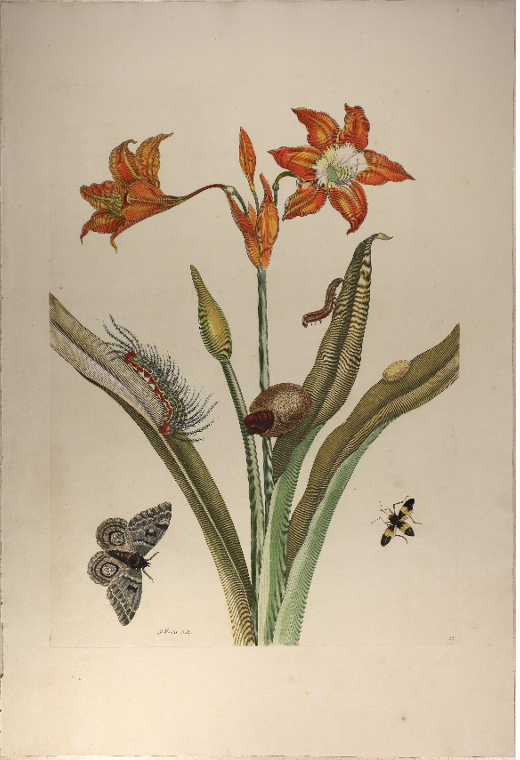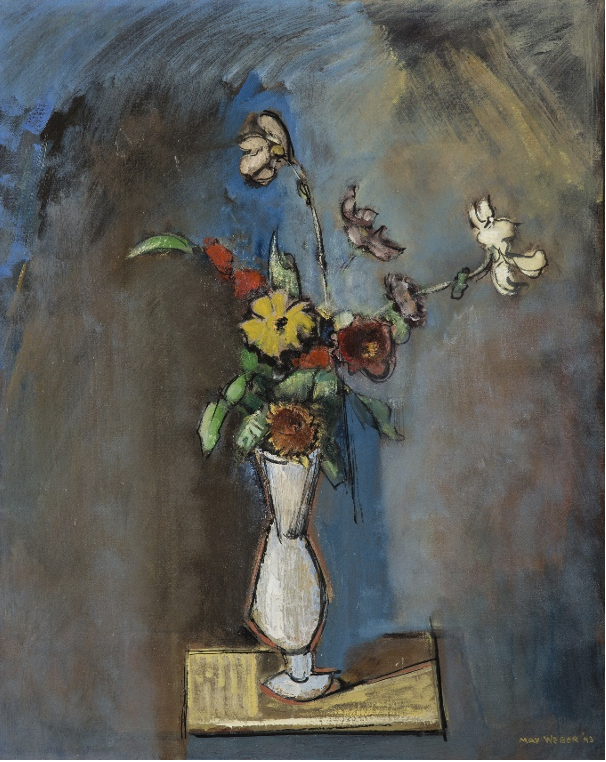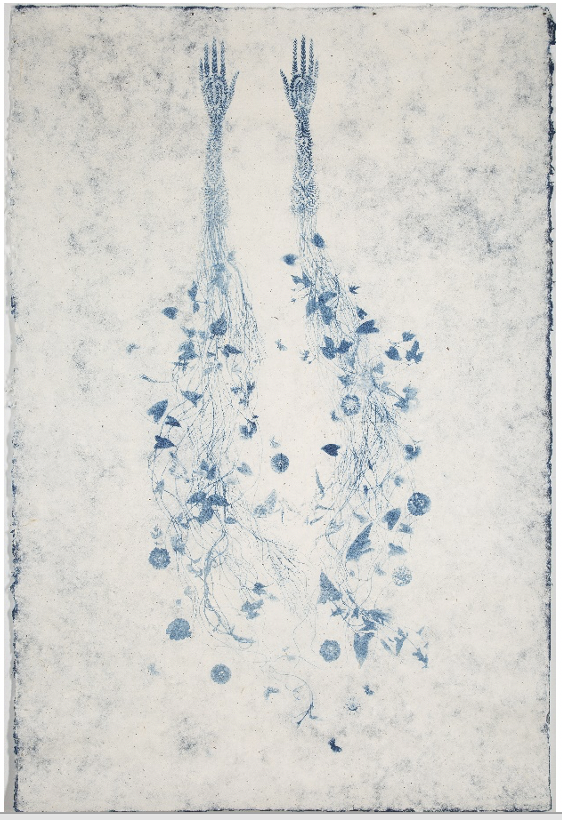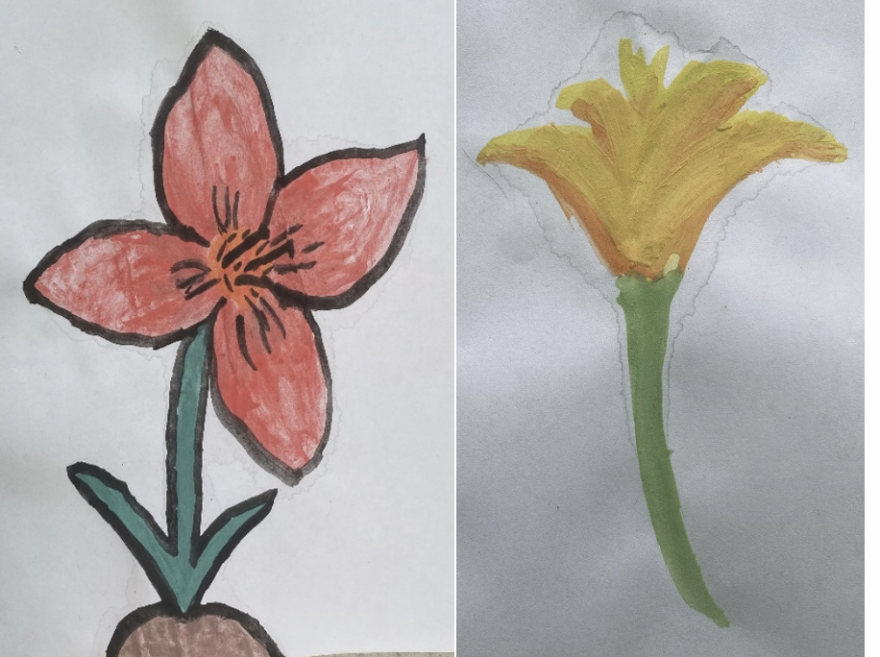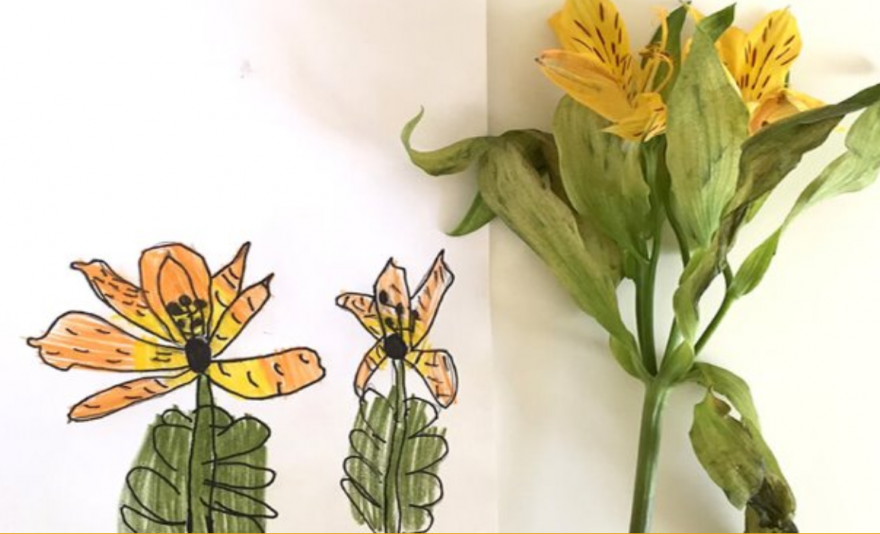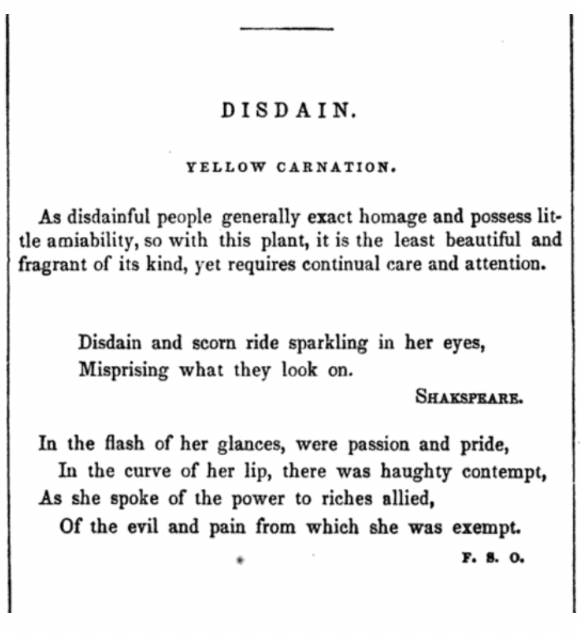Activity Guide by Kate Kwasneski
Intern, Grinnell College Museum of Art
Look and Learn
Flowers are everywhere in art. They are beautiful and common to see in nature, so it’s no wonder that artists often represent them in their work. Today, we are going to look at some artwork featuring flowers in the Grinnell College Museum of Art collection, and then you can create a flower of your own!
In biology, a flower is what helps a plant to reproduce. The beautiful colors and fancy petals of flowers are not just there for show: they attract insects and other animals who move the pollen of one flower to another. When a honey bee or hummingbird brushes up against a flower, usually while they drink the nectar inside, pollen sticks to their body. At the next flower they visit, some of this pollen will attach to the part of a flower called a stigma, and this lets the flower begin making new seeds.
Flowers are important in nature, but they have also been important to humans throughout time as well! Throughout history, flowers have been used as symbols with unique meanings. This practice of giving meaning to flowers known as floriography. Some common examples are roses symbolizing love and poppies being used to honor those who died in wars. Artists sometimes use floriography in their artwork, but sometimes the flowers they choose do not have a symbolic meaning.
The flowers shown here look like they might be lilies. This engraving, by Maria Sibylla Merian, is meant to show the life cycle of the insects on the page. These insects live on and around this species of lily. If you would like to learn more about the lifecycle, or Maria Sibylla Merian, you can look at this activity guide. Have you ever seen a flower like this? What do you think of its vibrant orange color? Are there any flowers where you live that provide a home to insects like this one?
This painting has several different kinds of flowers, artfully arranged in a vase. These colors are more muted. What do you think of them? Should flowers be brighter, or are these colors accurate? Think about how different shapes and colors of flowers look next to each other. In floriography, you could write messages by including different species of flowers. What do you think the message in this vase might be?
The lithograph shown above uses flowers in a more abstract way. Here, the flowers blend in to the human arms in an interesting way. What do you think about the monochrome blue? Would you add different colors? What does this piece mean to you?
This print looks like it might be a cartoon. It has a yellow flower and many cattails. Do you consider cattails to be flowers? Sunrise Flowers is bright and cheerful, with a rising sun over a lake and flower petals floating in the breeze. How does this print make you feel? What do you think of the colors that are featured here?
Create
Now it is time to create your own flower, or bouquet! What kind of petals will you include? Will yours overlap, will they make a spiral, or will they all come from one central point? Think about including patterns on your petals or your stem. Will you have multiple colors in your flower, or will all the petals be the same color?
Here are two flowers that I did with watercolors. Notice the color gradient on the red flower and the black details on their petals. That flower is outlined in a strong black line to make it stand out. The paint on the yellow and orange flower was applied in multiple coats, so that every petal has several layers that mix together. Think about ways that you can make your flowers unique. I did not paint a background, but you can! Think about how the location of your flower can change it: does it live in a sunny meadow or indoors in a pot?
Working from observation will help you see details!
Write
Your flower is unique and one of a kind. Floriography gives a different meaning to every kind of flower. For example, a tulip symbolizes a declaration of love. Floral dictionaries tell readers the meaning of each flower and then expand on it, telling how the flower got its meaning and often including poetry. What would the meaning of your flower be? Write about it as if you were writing in a floral dictionary.
Here is the entry on yellow carnations in Flower Gift: A Token of Friendship for All Seasons (full text below). This floral dictionary was published in 1840, which was 181 years ago! It was edited by Frances Sargent Osgood. You can see that this entry starts out with what the flower represents, in this case disdain. It then describes why the flower means that, and includes poetry related to the subject. Try using this style in your writing!
Disdain.
Yellow Carnation.
As disdainful people generally exact homage and possess little amiability, so with this plant, it is the least beautiful and fragrant of its kind, yet requires continual care and attention.
Disdain and scorn ride sparkling in her eyes,
Misprising what they look on.
— Shakspeare. [sic]
In the flash of her glances, were passion and pride,
In the curve of her lip, there was haughty contempt,
As she spoke of the power to riches allied,
Of the evil and pain from which she was exempt.
— F. S. O.

